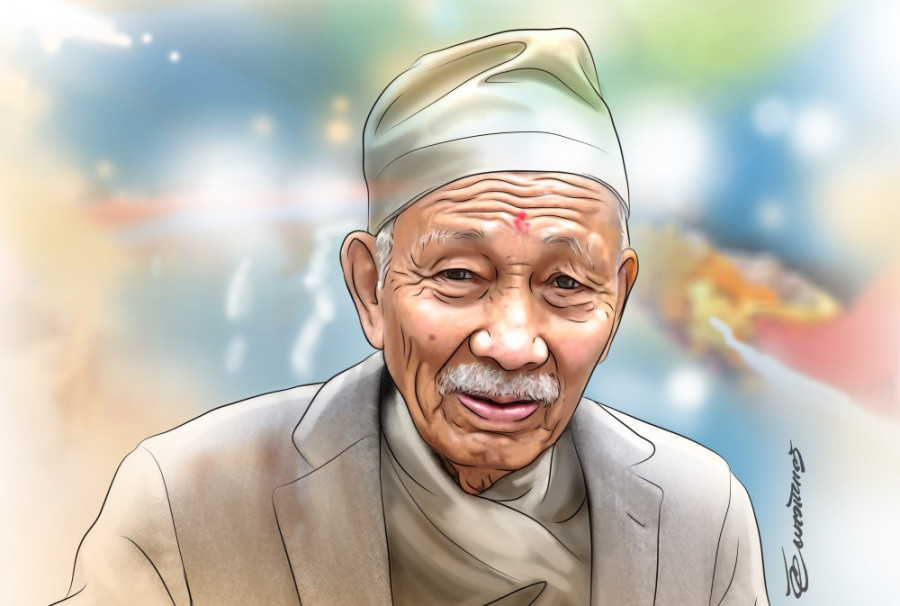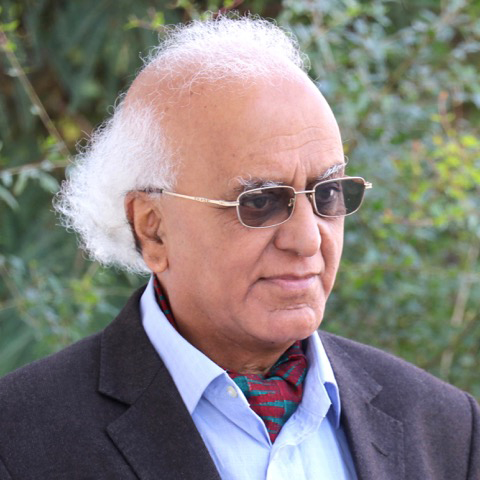Columns
Joshi’s performative cultural studies
The essence of his cultural studies is that no subject or belief becomes meaningful sans performance.
Abhi Subedi
One thing that struck me after the passing away of Satya Mohan Joshi on October 16 at the age of 103 is the nature of his response to life and work. Some very readable and insightful essays in English and Nepali have been published about Joshi's long life; work in cultural studies and different social roles. The insightful questions put by reporters about Joshi's activities and creative cultural engagements show another aspect that I find very important at this moment of awakening in Nepal.
Joshi's cultural studies naturally invite academic discussions. Based on my long familiarity and association with Satya Mohan Dai, I want to present my views about what I consider the essential character of his oeuvre. The most important one is the strong sense of performativity. Joshi's perception of history and culture was strongly guided by his sense of performativity. The term "cultural studies" has been used not in the sense of the theoretical orientations popular among literary theorists, but in the sense of the studies of culture such as those made by Joshi and other historians and analysts. It would be appropriate to evoke Joshi's own expressions about his true identity. I present a free translation here:
"I don't have a high academic degree. I got a job when I was studying BA. I worked in various capacities in different places, but I was not known as an expert in those subjects. I taught at Patan College for seven years, but I was not called a professor. I worked in China for six years, but I did not become a Sinologist. I researched extensively the life and work of Arniko in China and wrote a book, but I did not become a researcher. I became director of the Archaeology Department, but did not become an archaeologist. I became the member secretary of the Nepal Academy. I translated poetry, and wrote a long poem and an epic. But none of these works formed my identity. I was given the honorary title of DLitt by Kathmandu University, but I did not become a doctor. But my work in Sinja lasting only 50 days turned me into a sanskritivid or cultural expert for life."
Performance culture
These remarks partly express his disillusionment and partly his pride at being called a sanskritivid. But I would call him a philosopher with performance culture as the principal ontology. Joshi's perception was that for any kind of learning or creative work to be effective, it has to be written or perceived from the performative point of view. He has told me repeatedly that the source of Nepali culture is its dramatic relationship with the community. Every form of culture is made by the people who live or perform it in their daily lives. Being born and brought up in the Lichchhavi and Newar cultural milieu, Joshi believed that to understand culture we should understand the modes and methods of its performance. And he not only advocated this philosophy but also wrote plays which were performed at Gurukul Theatre with Sunil Pokharel as director and manager.
I recall the performances of Joshi's plays Bagh Bhairav and Majipa Lakhe. The first evokes Bagh Bhairav of Kirtipur and the second evokes history with Jung Bahadur as a prominent character. Culture as a performative power blends history and myth. Joshi did not believe in interpreting myths without evoking their performative character. The essence of his cultural studies is that no cultural subject or belief becomes meaningful sans performance, and it should not be seen as a fixed and textual phenomenon. Culture is a dynamic subject, Joshi believed, because we link it to life and our performances in the daily, seasonal and ritual cycles. Joshi has written other plays too, but I have no space to discuss them here.
Zeal for performance
His zeal and rage for performance was so strong that he was even prepared to be the director. Once, he was directing his dance drama Charumati with a cast of characters of more than 60 in a hall of Patan Municipality. After watching a rehearsal, theatre academic Shiva Rijal described its staggering size in an article entitled Satyamohan Joshi hunuko garima ("The greatness of being Satya Mohan Joshi"). That is an example of Joshi's powerful zeal for performance that I believe guided nearly all of his cultural writings including those about arts and sculpture. I say this because Joshi does not see the meaning of culture if that does not evoke life. The performative spirit is behind the power of intangible culture.
Satya Mohan Dai was very pleased when I told him that Chinese Nobel laureate novelist Mo Yan also held similar views about culture. I had met Mo Yan at a UNESCO seminar on intangible cultural heritage in Kunmin, China in November 2013. Mo Yan believed that the essence of China's cultural heritage is its performativity, and stressed the restoration of performativity as a mantra for saving it. Joshi was not content with his important research work Arniko published in a fat volume. To him Arniko was not performative enough in that shape. So he wrote an epic entitled Arnikokrit Shwetcaitya (2016) based on Arniko's works and life in China in the 13th century to give the character life. He liked my review of his epic in Kantipur (March 21, 2016) in which I have explained the underlying meaning that to make history and culture meaningful, you need to make the characters alive through performance. I think that is the essence of Satya Mohan Joshi's cultural studies.




 14.12°C Kathmandu
14.12°C Kathmandu















